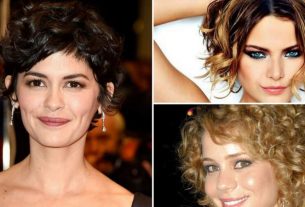Facial harmonization is a set of aesthetic procedures whose main objective is to promote the alignment and correction of facial angles, improve harmony between teeth and other skin characteristics, provide more beauty to the face and highlight existing characteristics, being recommended for men and women who want to improve the balance of the face and teeth, promote skin rejuvenation and improve facial symmetry.
This technique, also known as orofacial harmonization, is done according to the person’s needs, on an individual basis, through different aesthetic procedures, such as filling with hyaluronic acid in the cheeks, chin or lips, botox injections or bichectomy, for example.
Depending on the procedure performed, some results can be seen immediately, right after the aesthetic intervention, but the final result takes around 15 to 30 days to appear. It is important that facial harmonization is carried out by a dermatologist or plastic surgeon, as it has some risks, such as deformation of the face or even tissue necrosis, for example.

When to do facial harmonization
Harmonization is carried out for aesthetic purposes and is recommended for:
- Smooth and treat wrinkles and expression lines;
- Promote skin rejuvenation;
- Reduce double chin;
- Reduce dark circles;
- Add volume, shape and structure to lips;
- Define the jaw and the chin;
- Correct deep scars caused by acne;
- Raise the eyebrows;
- Correct the shape of the nose;
- Improve facial symmetry.
Before carrying out facial harmonization, it is important to pay attention to the location and professional who will carry out the procedure, as well as to find out about the risks related to the technique that will be used. Furthermore, it is important that the person’s skin is evaluated, as well as the presence of any disease or condition, as this may interfere with the technique that will be used to carry out the harmonization.
How it is made
Facial harmonization can be carried out using various techniques according to the objective of the procedure and the person’s individual needs and must be carried out by a dermatologist or plastic surgeon.
Some of the most used techniques to perform facial harmonization are:
1. Hyaluronic acid filler
Generally, filling is performed with hyaluronic acid, with the aim of increasing the volume of the cheekbones, chin or lips, for example. In addition, filling with hyaluronic acid is also used to even out furrows, wrinkles and fill in deep dark circles.
The intervention can last around 30 minutes to 1 hour, but the duration will depend on the regions that will be injected. Find out more about this aesthetic procedure.
2. Application botox
The application of botox It is used to lift or correct the angle of the eyebrows or smooth out expression wrinkles, such as crow’s feet, for example. O botox consists of a toxin, called botulinum toxin, which causes muscle relaxation, preventing the formation of wrinkles.
3. Lip filler
Lip filling is performed by a dermatologist or plastic surgeon with the application of hyaluronic acid, injected into the inside of the lip, to give more volume to the lips, correct their shape and make the lip fuller, improving the appearance of the groove between the upper lip and the nasal septum, or smooth out lines and wrinkles around the lips, which makes the lips better harmonized with the face. See how lip filling is done.
4. Lifting facial
Generally, the lifting facial used to perform facial harmonization, it is carried out through the insertion of polylactic acid threads, which promotes a facial lifting effect by pulling the tissues, without the need for surgery.
5. Microneedling
The microneedling technique consists of promoting thousands of microlesions in the skin, which stimulate the production of collagen and growth factors, giving the skin more firmness and softening blemishes and scars.
This technique can be performed with a manual device called a Dermaroller or with an automatic device called a Dermapen. Learn more about microneedling.
6. Peeling
O peeling consists of the application of acidic substances that promote light peeling of the outermost layer of the skin, stimulating cell renewal, softening expression lines and providing a more uniform tone to the skin.
7. Bichectomy
Bichectomy is a surgical procedure performed by a plastic surgeon or dentist in which small pockets of fat accumulated on both sides of the face are removed, highlighting the cheekbones and slimming them. Normally there is no visible scar on the face, because the surgery is carried out through cuts made inside the mouth, which are less than 5 mm.
Generally, the results of the surgery are only visible approximately 1 month after the intervention. Find out what precautions can be taken to speed up recovery and the possible risks of surgery.
8. Mesotherapy
Mesotherapy is a procedure in which the doctor uses injections of vitamins A, C and E, together with glycolic acid, for example, which improve local blood circulation, stimulate collagen production, improving skin firmness, which helps to smooth wrinkles and expression lines, in addition to reducing skin blemishes. See how mesotherapy is done.
9. Dental procedures
In addition to the aesthetic interventions carried out on the face, facial harmonization also consists of carrying out dental procedures, such as the use of dental braces, the application of implants, dental veneers or tooth whitening, for example, carried out by the dentist. See how dental contact lenses are applied.
Risks of facial harmonization
Although in most cases easy harmonization is considered a safe procedure, when it is not performed by a trained professional or when the technique is not performed correctly, the procedure may be associated with some risks, such as:
- Obstruction of blood flow at the site;
- Skin necrosis;
- Facial deformation;
- Infections.
Furthermore, when harmonization is done excessively, it can lead to a sudden change in the face and the person may not recognize themselves in the mirror, which can cause emotional problems.
Another risk of facial harmonization is that, as some of the techniques performed do not have a lasting effect, people end up carrying out the procedure more than once.
How long does facial harmonization last?
The duration of harmonization varies according to the procedure that was performed. For example, the application of botulinum toxin can last from 4 to 6 months, while the application of hyaluronic acid can last up to 2 years, and can be repeated after the indicated period.
Bichectomy, which is surgery performed inside the mouth with the aim of reducing the cheeks, is a definitive procedure.
Is it possible to reverse facial harmonization?
The possibility of reversing facial harmonization depends on the type of procedure that was performed. Generally, filling with hyaluronic acid can be reversed as it has an antidote, whereas the application of botulinum toxin has no antidote and it is necessary to wait for the body to absorb the toxin for the effect to wear off.
Furthermore, in the case of surgery such as bichectomy, for example, harmonization is definitive and may be more difficult to reverse.

Sign up for our newsletter and stay up to date with exclusive news
that can transform your routine!
Warning: Undefined array key "title" in /home/storelat/public_html/wp-content/plugins/link-whisper-premium/templates/frontend/related-posts.php on line 12
Warning: Undefined array key "title_tag" in /home/storelat/public_html/wp-content/plugins/link-whisper-premium/templates/frontend/related-posts.php on line 13




